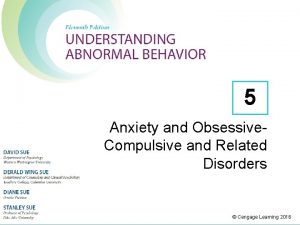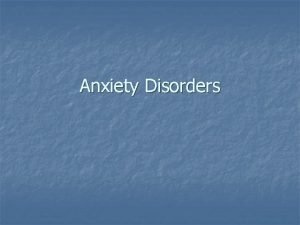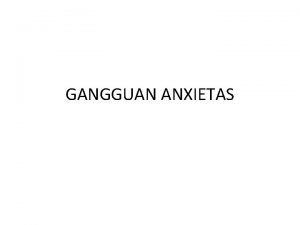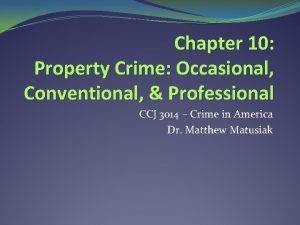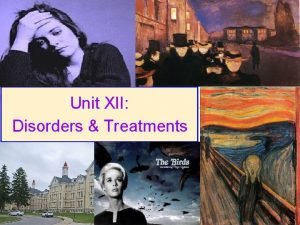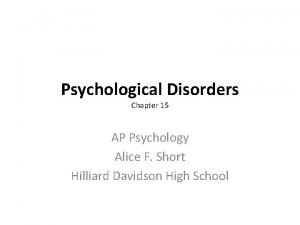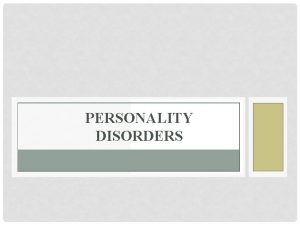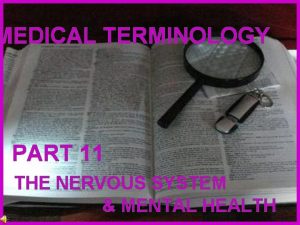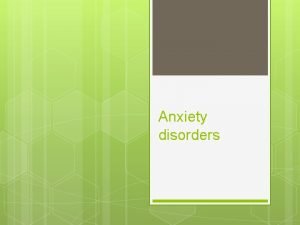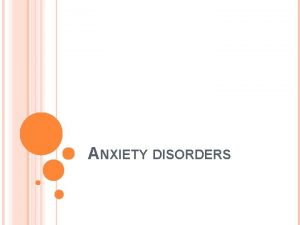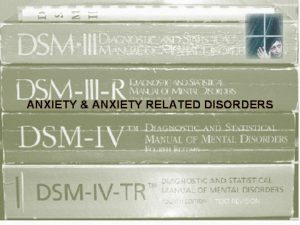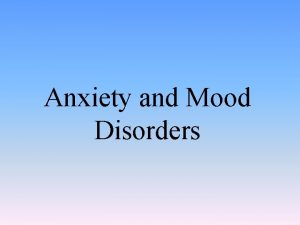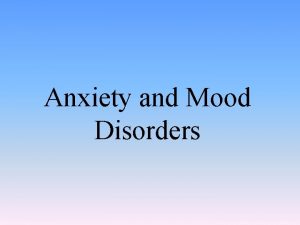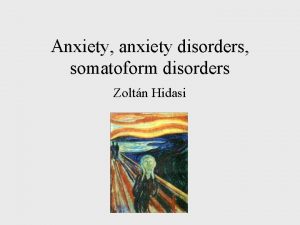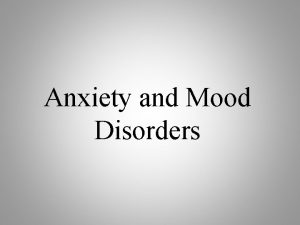ANXIETY ANXIETY DISORDERS Overview Occasional anxiety is a









- Slides: 9

ANXIETY

ANXIETY DISORDERS • Overview: • -Occasional anxiety is a normal part of life (i. e. test taking, new job, etc. . . ). • • -Anxiety disorders involve more than temporary worry or fear and include • -Generalized Anxiety Disorder • -Panic Disorder • -Social Anxiety

GENERALIZED ANXIETY • Display excessive anxiety or worry for months. • Face symptoms of: Restlessness, being on edge, easily fatigued, difficulty concentrating, irritability, muscle tension, difficult controlling worry, sleep problems.

PANIC DISORDER • Reoccurring periods of panic attacks with sudden periods of intense fear. • Symptoms include: pounding heart, accelerated heart rate, trembling, sweating, shortness of breath, smothering or choking, feeling of impending doom.

SOCIAL ANXIETY DISORDER • Feeling highly anxious about being with other people, or having a hard time talking to them. • Symptoms include: feeling self-conscious, worried about feeling embarrassed, worrying about offending others, fear of being judged, having a hard time making/keeping friends, blushing/sweating/or trembling around others, feeling nauseous or sick when people around.

STRATEGIES IN THE CLASSROOM • https: //www. youtube. com/watch? v=jf 404_H 0 r 8 Q#action=share • Please watch the above link. stood out to you. While watching, note three things that

WHAT CAN YOU DO? • Create a safe place for the child to go when anxiety symptoms are high (i. e. nurses office, preferred setting). • Establish rules for using breaks or calming activities (i. e. time limits, location, communication). • Allow time for difficult transition activities (start of school, end of day, lunch, between classes). • Ask the student for ideas of helpful strategies. • Be aware of activities that distract the child from their anxiety (coloring, reading, music). • Teach the child relaxation techniques.

WHAT CAN YOU DO? • Reward effort when they are able to control their anxiety symptoms. • Follow classroom accommodations: provide a warning prior to calling on a student, or prior to group work, extended time, shortened assignments, offer choices.

6 THINGS YOU SHOULDN’T SAY TO SOMEONE WITH ANXIETY • 1. “Don’t sweat the small stuff. ” • 2. “Calm down. ” • 3. “Just do it. ” • 4. “Everything is going to be fine. ” • 5. “I’m stressed out too. ” • 6. “Did I do something wrong? ”
 Multipath model of anxiety disorders
Multipath model of anxiety disorders Chapter 15 anxiety and obsessive-compulsive disorders
Chapter 15 anxiety and obsessive-compulsive disorders Anxiety disorders def
Anxiety disorders def Icd 10 panic disorder
Icd 10 panic disorder Conventional property criminals
Conventional property criminals Psychological disorders
Psychological disorders Ap psychology chapter 15
Ap psychology chapter 15 Personality disorders dsm 5
Personality disorders dsm 5 Disorders of the nervous system
Disorders of the nervous system Looney tunes characters with speech impediments
Looney tunes characters with speech impediments
